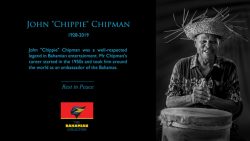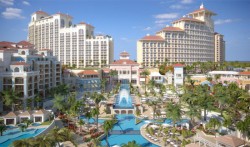NORMAN’S CAY, Bahamas – The radio tower used to summon Colombian cocaine shipments still stands, but the barracks for drug flight pilots now houses mainly wasp nests. And the walls of Carlos Lehder Rivas’s smuggling command center is festooned with tourist graffiti.
In the crystal-clear water a few hundred yards from this remote island lies the wreckage of a DC-3 aircraft that crashed in the early 1980s heyday of Lehder’s infamous Medellin Cartel.
The plane, bound for a clandestine air strip somewhere in the United States, was carrying more than two tons of cocaine back then. Now, it’s a favorite spot for fish and divers.
Lehder, a founder of the Medellin Cartel, was convicted in U.S. federal court in 1988 on drug trafficking charges and sentenced to life plus 135 years. That was reduced to 55 years after his testimony on behalf of the government in the 1990s against former Panamanian dictator Manuel Noriega, who is also imprisoned in the United States on a drug conviction.
Before all of that, Lehder was running a cocaine empire without peer.
Norman’s Cay is where Lehder hoped to build a permanent cocaine trafficking empire, eventually constructing a runway big enough to handle jumbo jets loaded with drugs, said Kevin Stanfill, the top U.S. Drug Enforcement Administration official in the Bahamas.
The DEA’s joint drug interdiction task force with the Bahamian government was formed partly in reaction to Lehder’s audaciousness, Stanfill said.
“He would use his radio tower to call directly to Colombia and tell them it was OK to bring up a shipment,” Stanfill said. “He had gunmen. He had a command and control center. He had a huge deck for parties. He basically had his own hotel here.”
At another end of the island was Lehder’s oceanfront home, dubbed “The Volcano” for its conical shape. Lehder kept a boat nearby so he could quickly escape if authorities ever raided his drug compound.
During Lehder’s trial, former CBS News anchorman Walter Cronkite testified about the time he pulled his sailboat into the Norman’s Cay harbor, climbed into his dinghy and headed towards the dock. In the past, the popular harbor was so crowded it was difficult to find a spot to anchor.
This time, it was oddly deserted.
“An individual came out on the dock and said,’You cannot dock here, and furthermore you cannot anchor out there,'” Cronkite testified. He later found out that it was common knowledge in the area that the harbor had been taken over by the drug runners.
“I was the most naive yachtman in the Bahamas,” Cronkite said at the trial.
Testimony at Lehder’s trial indicated that he paid bribes to the Bahamian government to run his operation from Norman’s Cay, although the Bahamians denied that. Eventually, the DEA and Bahamians made it difficult for Lehder to continue operating from the island, and he was finally captured in 1987 after a gun battle in Colombia to face trial in the United States.
Now 56, Lehder is serving out his prison term at an undisclosed U.S. penitentiary, said Ernst Mueller, who was part of the federal prosecution team in 1988. He would likely be in his 70s before he is eligible for release.
“He’s in the prison witness protection program. That’s a prison within the prison,” said Mueller, who now works for the city of Jacksonville.
CURT ANDERSON, Associated Press



